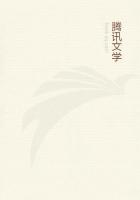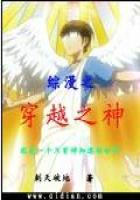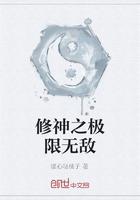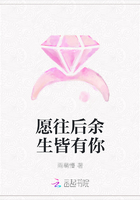All these apparatus follow in the track of Reis and Bourseul--that is to say, the interruption of the current by a vibrating contact. It was fortunate for Bell that in working with his musical telephone an accident drove him into a new path, which ultimately brought him to the invention of a speaking telephone. He began his researches in 1874 with a musical telephone, in which he employed the interrupted current to vibrate the receiver, which consisted of an electro-magnet causing an iron reed or tongue to vibrate; but, while trying it one day with his assistant, Mr. Thomas A. Watson, it was found that a reed failed to respond to the intermittent current. Mr. Bell desired his assistant, who was at the other end of the line, to pluck the reed, thinking it had stuck to the pole of the magnet. Mr. Watson complied, and to his astonishment Bell observed that the corresponding reed at his end of the line thereupon began to vibrate and emit the same note, although there was no interrupted current to make it. A few experiments soon showed that his reed had been set in vibration by the magneto-electric currents induced in the line by the mere motion of the distant reed in the neighbourhood of its magnet. This discovery led him to discard the battery current altogether and rely upon the magneto-induction currents of the reeds themselves. Moreover, it occurred to him that, since the circuit was never broken, all the complex vibrations of speech might be converted into sympathetic currents, which in turn would reproduce the speech at a distance.
Reis had seen that an undulatory current was needed to transmit sounds in perfection, especially vocal sounds; but his mode of producing the undulations was defective from a mechanical and electrical point of view. By forming 'waves' of magnetic disturbance near a coil of wire, Professor Bell could generate corresponding waves of electricity in the line so delicate and continuous that all the modulations of sound could be reproduced at a distance.
As Professor of Vocal Physiology in the University of Boston, he was engaged in training teachers in the art of instructing deaf mutes how to speak, and experimented with the Leon Scott phonautograph in recording the vibrations of speech. This apparatus consists essentially of a thin membrane vibrated by the voice and carrying a light stylus, which traces an undulatory line on a plate of smoked glass. The line is a graphic representation of the vibrations of the membrane and the waves of sound in the air.
On the suggestion of Dr. Clarence J. Blake, an eminent Boston aurist, Professor Bell abandoned the phonautograph for the human ear, which it resembled; and, having removed the stapes bone, moistened the drum with glycerine and water, attached a stylus of hay to the nicus or anvil, and obtained a beautiful series of curves in imitation of the vocal sounds.
The disproportion between the slight mass of the drum and the bones it actuated, is said to have suggested to him the employment of goldbeater's skin as membrane in his speaking telephone. Be this as it may, he devised a receiver, consisting of a stretched diaphragm or drum of this material having an armature of magnetised iron attached to its middle, and free to vibrate in front of the pole of an electro-magnet in circuit with the line.
This apparatus was completed on June 2, 1875, and the same day he succeeded in transmitting SOUNDS and audible signals by magneto-electric currents and without the aid of a battery. On July 1, 1875, he instructed his assistant to make a second membrane-receiver which could be used with the first, and a few days later they were tried together, one at each end of the line, which ran from a room in the inventor's house at Boston to the cellar underneath. Bell, in the room, held one instrument in his hands, while Watson in the cellar listened at the other. The inventor spoke into his instrument, 'Do you understand what I say?' and we can imagine his delight when Mr. Watson rushed into the room, under the influence of his excitement, and answered,'Yes.'
A finished instrument was then made, having a transmitter formed of a double electro-magnet, in front of which a membrane, stretched on a ring, carried an oblong piece of soft iron cemented to its middle. Amouthpiece before the diaphragm directed the sounds upon it, and as it vibrated with them, the soft iron 'armature' induced corresponding currents in the cells of the electro-magnet. These currents after traversing the line were passed through the receiver, which consisted of a tubular electro-magnet, having one end partially closed by a thin circular disc of soft iron fixed at one point to the end of the tube.
This receiver bore a resemblance to a cylindrical metal box with thick sides, having a thin iron lid fastened to its mouth by a single screw.
When the undulatory current passed through the coil of this magnet, the disc, or armature-lid, was put into vibration and the sounds evolved from it.
The apparatus was exhibited at the Centennial Exhibition, Philadelphia, in 1876, and at the meeting of the British Association in Glasgow, during the autumn of that year, Sir William Thomson revealed its existence to the European public. In describing his visit to the Exhibition, he went on to say: 'In the Canadian department I heard, "To be or not to be . . . there's the rub," through an electric wire; but, scorning monosyllables, the electric articulation rose to higher flights, and gave me passages taken at random from the New York newspapers: "s.s. Cox has arrived" (I failed to make out the s.s. Cox);"The City of New York," "Senator Morton," "The Senate has resolved to print a thousand extra copies," "The Americans in London have resolved to celebrate the coming Fourth of July!" All this my own ears heard spoken to me with unmistakable distinctness by the then circular disc armature of just such another little electro-magnet as this I hold in my hand.'

